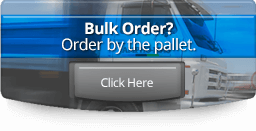When first responders arrive at the scene of an emergency, they are there to control the situation and bring people to safety while they wait for other forms of back-up to arrive. They know what to expect when they are called to respond to situations such as car accidents, fires, and crime scenes, and are trained accordingly. But, if they arrive at a scene to find an unidentified substance, there is little they can do to neutralize its potential danger. Instead, they have to call and wait for a third-party hazardous material crew to address it.
First responders face several challenges today that they did not have to deal with in the past. From new types of chemicals to new types of attacks, these situations require immediate neutralization in order to protect the health and safety of everyone nearby, including:
- Chemical terrorism — An intentional release of hazardous material meant to injure or kill people.
- New compounds used in drug manufacturing — It is hard to tell exactly what emergency personnel will come across at the scene of a drug lab. In the chaos of a raid, some damage is likely to be done, possibly spilling hazardous material in a confined space.
- The proliferation of new types of batteries — Lithium batteries used in electric and hybrid automobiles can be extremely dangerous if they are breached. Though they are designed to a higher standard than regular lead-acid batteries, spills do still occur.
- Widespread variety and use of industrial solvents — Industrial cleaners, solvents and mineral spirits are known to be harmful even in small quantities, while specialized products can be even more hazardous.
In an emergency situation, first responders likely do not have the time or technology to perform tests on an unknown liquid, let alone be able to obtain a specialized neutralizing product. Amphomag®, a universal neutralizer with a built-in pH indicator, safely adsorbs and treats spills, no matter if their name or makeup is known. It provides a rapid response to safely neutralize acids, bases, and gases, adsorb liquids and control odors, all while the third-party hazardous clean-up crew is on its way.
First responders face a tougher working environment now than they did even just a decade ago. With every new threat, new strategies for handling them are put in place. Having a universal neutralizer on hand at all times will help first responders quickly control the scene of an emergency so they can focus on saving lives.



